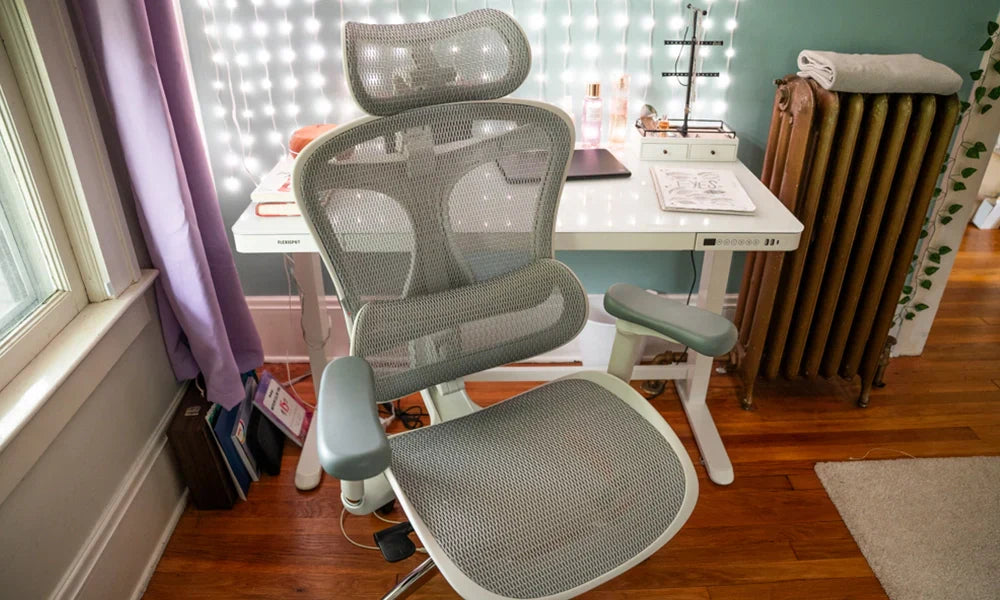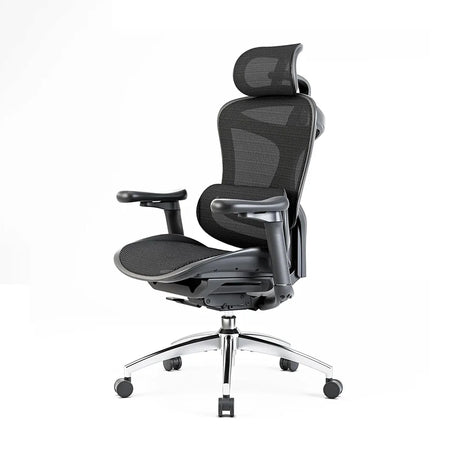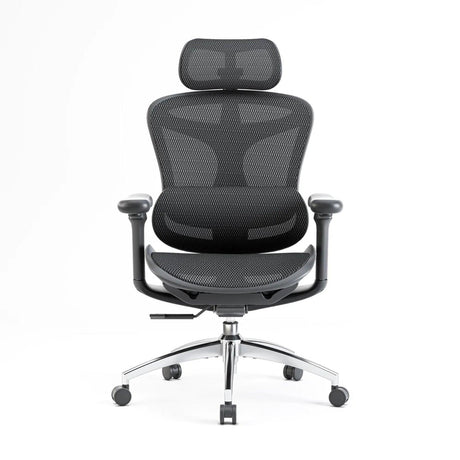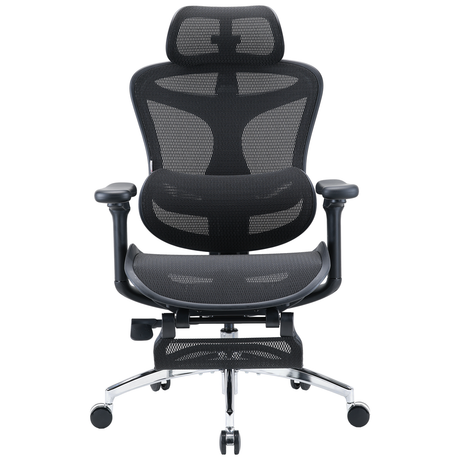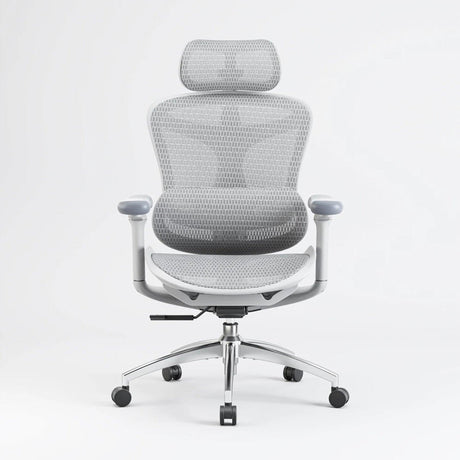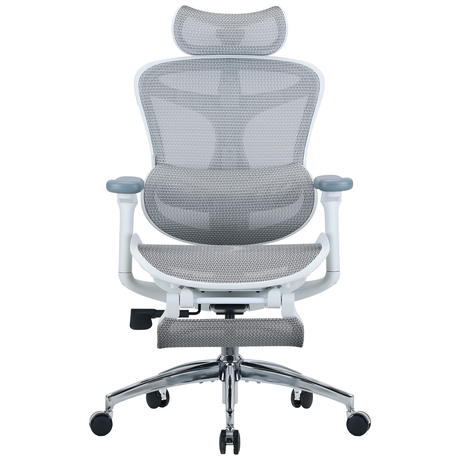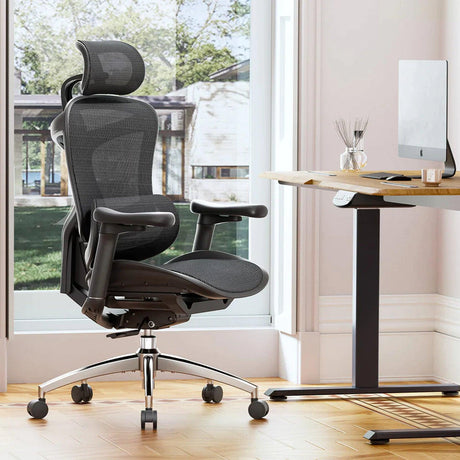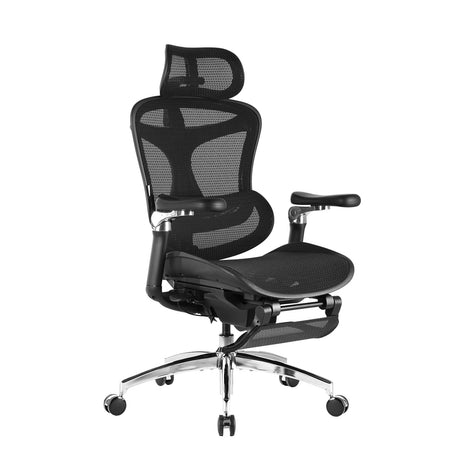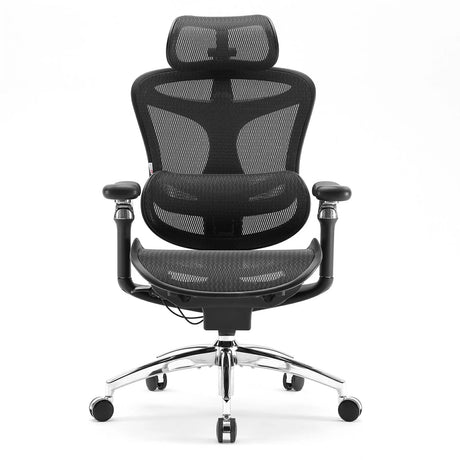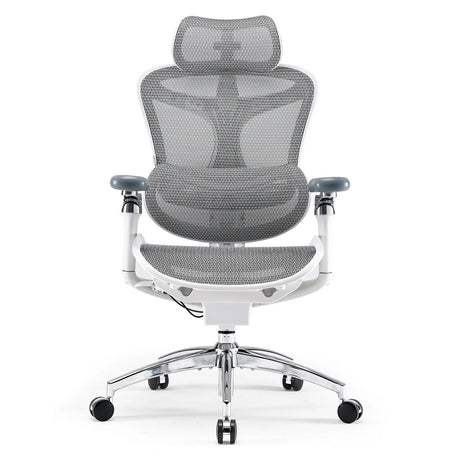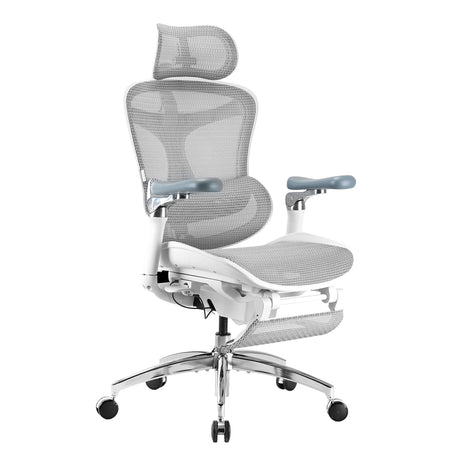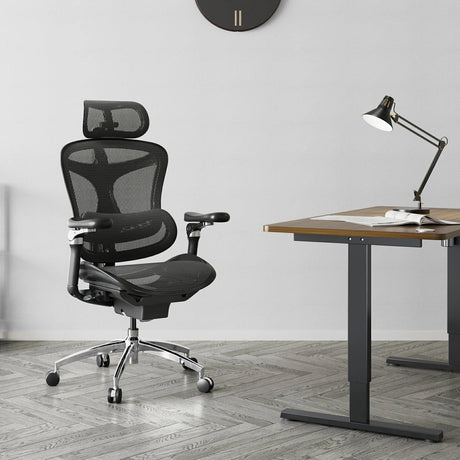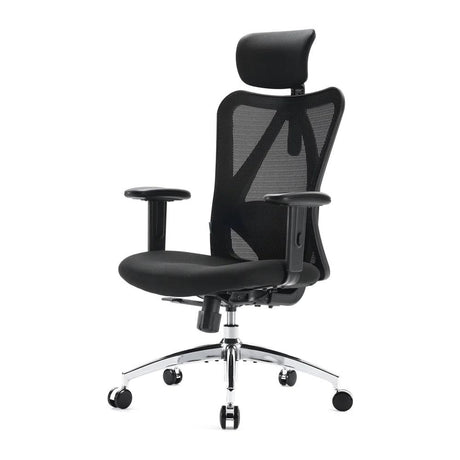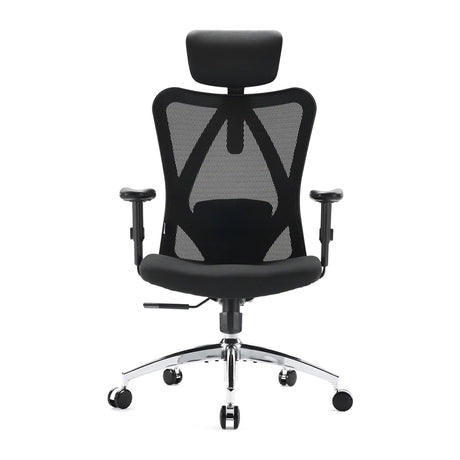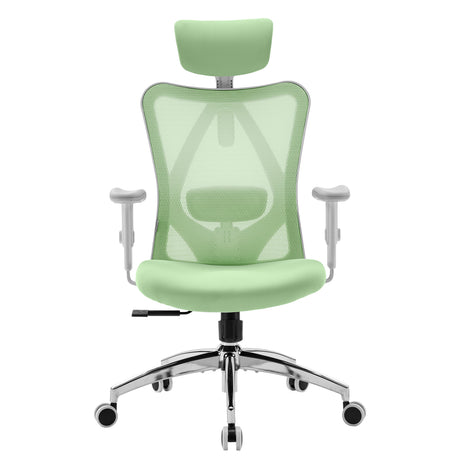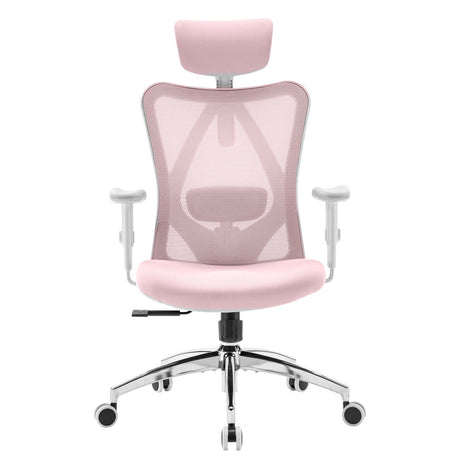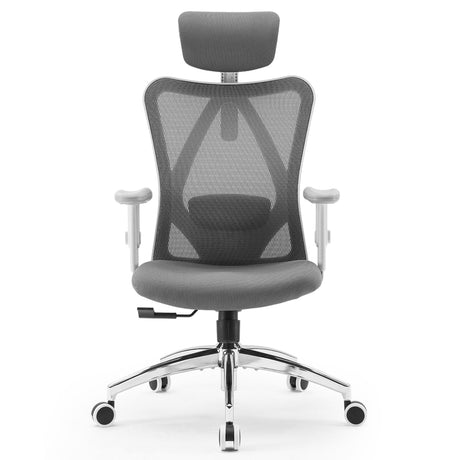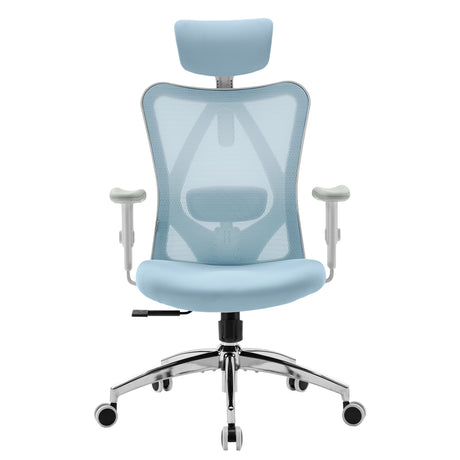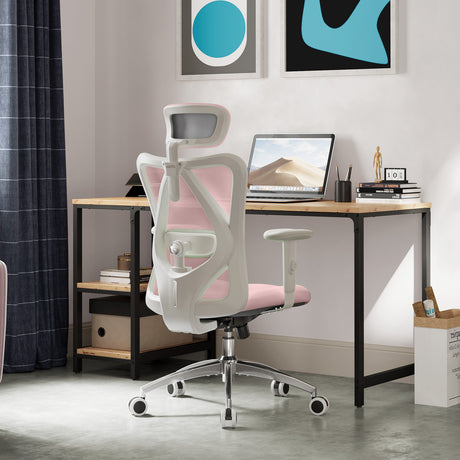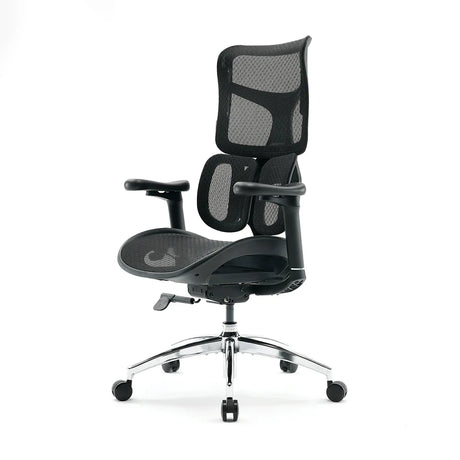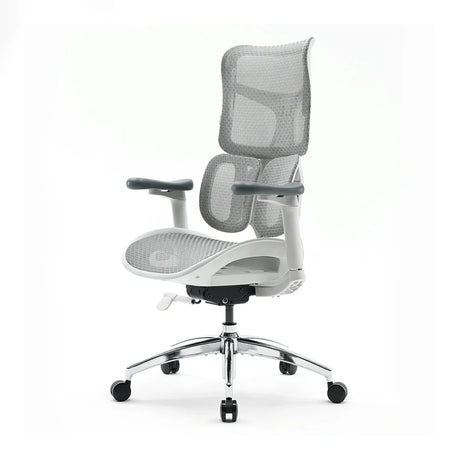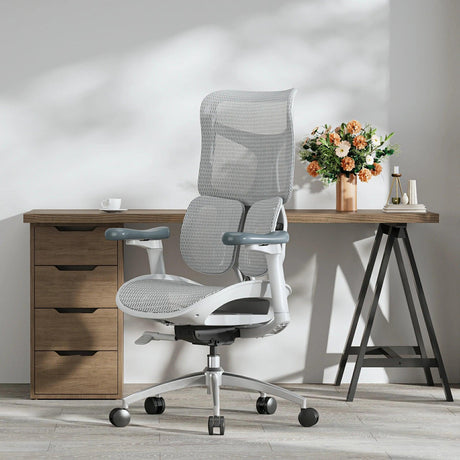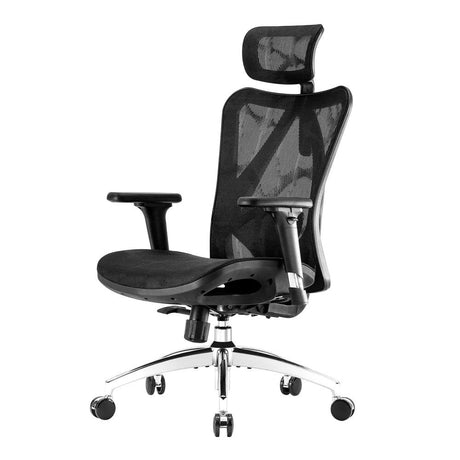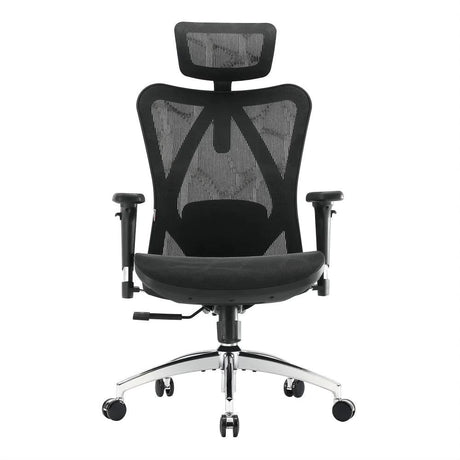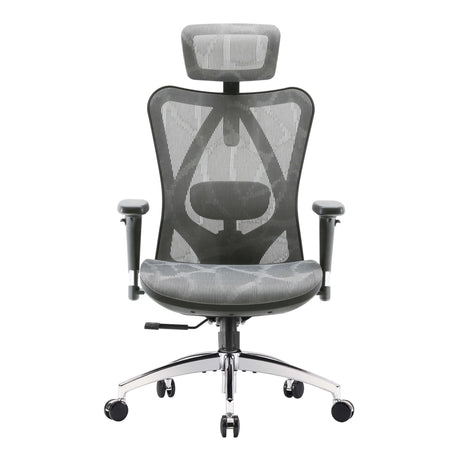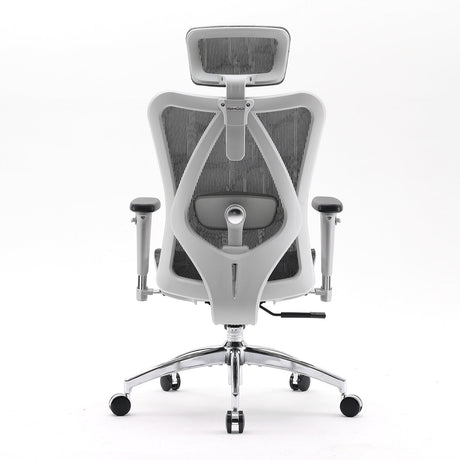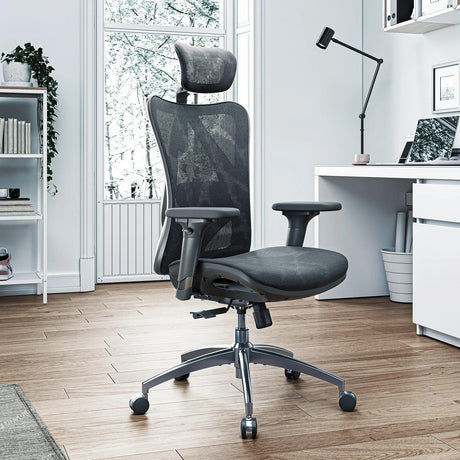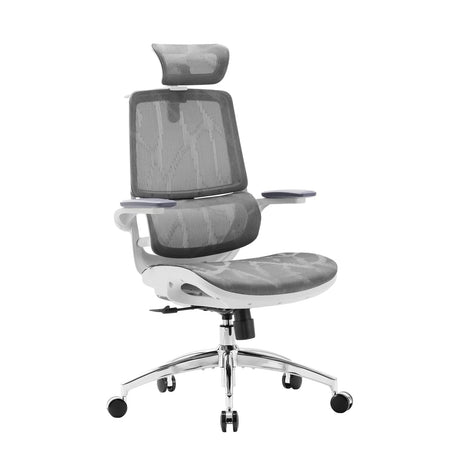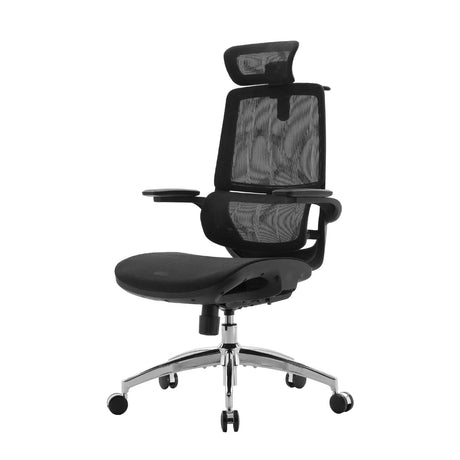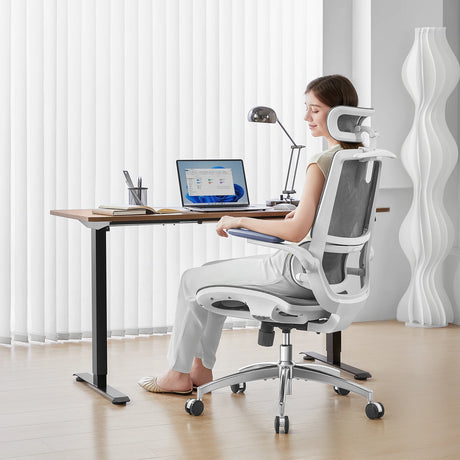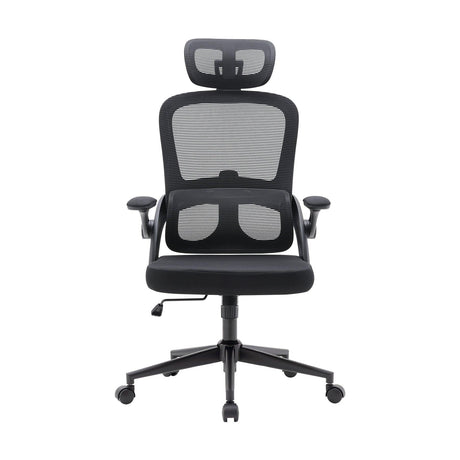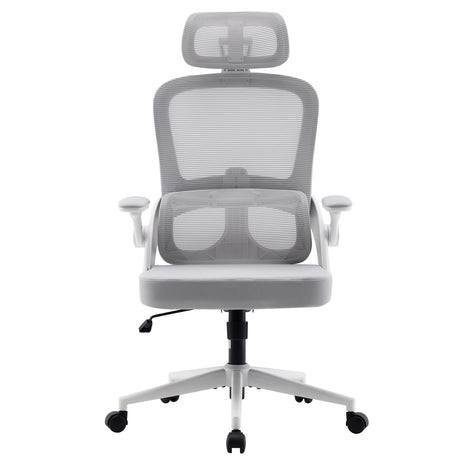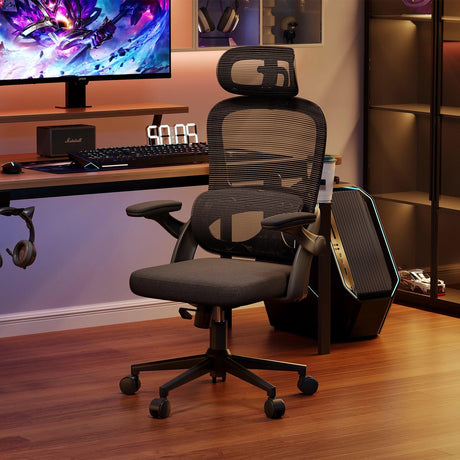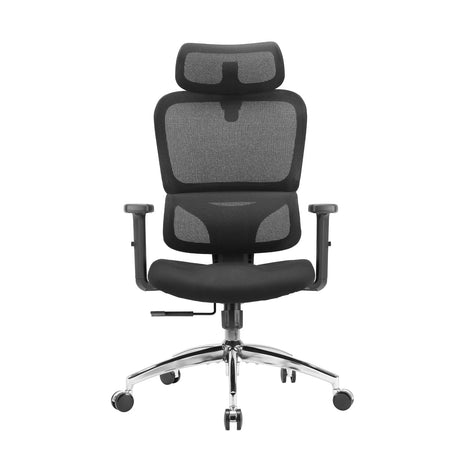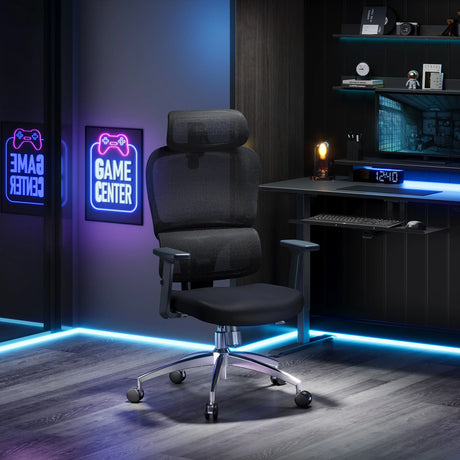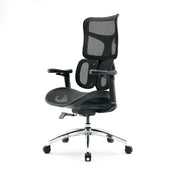Back pain has become one of the most common workplace complaints worldwide, and for good reason. Modern office jobs often demand hours of sitting in front of a computer, leaving workers vulnerable to aches, stiffness, and long-term health problems. While back pain can stem from many causes, one of the most overlooked solutions is simply learning how to sit properly and choosing the right chair.
In this article, we will explore the best sitting position in the office to avoid back pain. We’ll look at posture, ergonomics, lifestyle adjustments, and why investing in a high-quality ergonomic chair like the Sihoo Doro C300 can transform your sitting experience and protect your back for years to come.
Why Back Pain Is So Common in Office Work
Before diving into the best sitting position, it helps to understand why back pain occurs in the first place. Some of the biggest culprits include:
- Poor Posture – Leaning forward, slouching, or leaning too far back places excess pressure on the spine and surrounding muscles.
- Static Sitting – Sitting for hours without movement reduces blood circulation, tightens muscles, and stresses the spine.
- Improper Desk Setup – A desk that’s too high, a monitor that’s too low, or a chair without proper support can force the body into unnatural positions.
- Weak Core Muscles – A sedentary lifestyle often weakens core and back muscles, which are crucial for maintaining proper posture.
Understanding these issues is the first step to correcting them. The second step? Sitting smarter.
The Foundations of a Healthy Sitting Position
The best sitting position for avoiding back pain doesn’t happen by accident—it’s built on ergonomic principles. Here are the key foundations:
1. Feet Flat on the Ground
Your feet should rest firmly on the floor (or on a footrest if needed). Dangling feet or crossing legs for long periods can throw off spinal alignment and increase strain.
2. Knees at 90 Degrees
Aim to keep your knees at a right angle, slightly lower than your hips. This helps maintain the natural curve of your lower back.
3. Hips Back in the Chair
Sit with your hips fully against the backrest. This prevents slouching and ensures your spine benefits from lumbar support.
4. Spine in Neutral Position
Your spine has three natural curves—cervical (neck), thoracic (mid-back), and lumbar (lower back). A good sitting position maintains these curves rather than flattening or exaggerating them.
5. Back Supported
A quality ergonomic office chair should support your lower back (lumbar), upper back, and shoulders. Without support, muscles fatigue, leading to poor posture.
6. Arms Relaxed and Supported
Elbows should rest close to your body at about 90–100 degrees, with forearms parallel to the desk. Armrests should hold your arms lightly without lifting your shoulders.
7. Screen at Eye Level
Your monitor should be at or slightly below eye level, about an arm’s length away, so you don’t need to crane your neck.
Common Sitting Mistakes to Avoid
Even with a good chair, many people unknowingly fall into habits that cause pain. Watch out for these mistakes:
- Slouching Forward: Places stress on the lower back.
- Leaning Too Far Back: Reduces support for the spine.
- Crossing Legs for Long Periods: Causes misalignment in the hips and lower back.
- Perching on the Edge of the Seat: Eliminates back support entirely.
- Looking Down at a Laptop Screen: Leads to neck and shoulder strain.
Avoiding these mistakes goes hand in hand with maintaining proper posture.
Micro-Movements: The Secret Weapon Against Back Pain
Even the best sitting position won’t protect your back if you remain motionless for eight hours. The human body was designed for movement, not stillness. Incorporating micro-movements throughout the day can help reduce stiffness and pain.
- Shift Positions: Adjust your posture every 20–30 minutes.
- Stretch: Simple stretches like rolling your shoulders or arching your back can work wonders.
- Stand Up: Alternate between sitting and standing when possible.
- Walk: Short walks during breaks help restore circulation.
Think of sitting posture as a “dynamic” position rather than a “static” one.
How an Ergonomic Chair Makes All the Difference
While posture is critical, your chair either supports or sabotages your efforts. A poorly designed chair forces your body into unnatural positions. An ergonomic chair, on the other hand, adapts to your body and encourages healthy alignment.
This is where the Sihoo Doro C300 stands out as a game-changer for office workers.
Spotlight: Why the Sihoo Doro C300 Is Ideal for Back Pain Relief
The Sihoo Doro C300 ergonomic office chair is specifically engineered to keep you sitting comfortably and healthily during long hours at work. Let’s look at its standout features and why they matter for your back:
1. Self-Adaptive Lumbar Support
The C300’s lumbar system automatically adjusts to the curve of your spine, ensuring that your lower back receives constant, dynamic support. This prevents the all-too-common ache that develops when lumbar support is missing or poorly positioned.
2. Flexible Backrest
Unlike rigid chairs, the C300 allows gentle flexibility in its backrest, moving with you as you shift positions. This promotes micro-movements that reduce stiffness and encourage circulation.
3. 4D Coordinated Armrests
The armrests adjust in four directions—up/down, forward/backward, side-to-side, and rotation—so you can position your arms naturally without straining your shoulders or neck.
4. Smart Weight-Sensing Chassis
This feature allows the chair to respond to your body’s movements intuitively, providing smooth reclining without sudden drops or stiff resistance.
5. Waterfall-Shaped Seat Cushion
The seat is designed to reduce pressure on your thighs and promote better blood flow, which prevents discomfort and numbness during extended sitting.
By combining these ergonomic features, the Sihoo Doro C300 encourages proper posture effortlessly, helping you maintain the best sitting position without constantly thinking about it.
Sihoo Doro C300 Office Chair
Step-by-Step Guide: Setting Up Your Office for a Healthy Sitting Position
Even with the perfect chair, your desk setup matters. Here’s a simple guide:
- Chair Height: Adjust so your feet are flat and knees at 90 degrees.
- Desk Height: Your elbows should rest comfortably at desk level.
- Monitor Position: Place your screen at eye level, one arm’s length away.
- Keyboard and Mouse: Keep them close so you don’t need to reach.
- Lighting: Ensure good lighting to prevent leaning forward or squinting.
The combination of chair + setup = pain-free productivity.
Daily Habits to Support a Healthy Back
Good sitting posture is just one piece of the puzzle. To truly protect your back, add these habits into your workday:
- Take Breaks: Follow the “20-20-20 rule”—every 20 minutes, look 20 feet away for 20 seconds.
- Stretch Regularly: Especially your hamstrings, hips, and shoulders.
- Strengthen Your Core: Exercises like planks or bridges help stabilize your spine.
- Stay Hydrated: Dehydration can stiffen muscles and joints.
- Practice Mindful Posture: Set reminders to check your posture until it becomes second nature.
The Long-Term Benefits of Proper Sitting
Investing time and effort into sitting correctly isn’t just about avoiding short-term discomfort. The long-term benefits include:
- Reduced risk of chronic back and neck pain.
- Better circulation and reduced risk of varicose veins.
- Higher energy levels throughout the workday.
- Improved focus and productivity.
- A healthier spine and posture even outside of work.
Final Thoughts: Your Back Will Thank You
The best sitting position in the office to avoid back pain is not about sitting rigidly but about aligning your body naturally, moving often, and choosing the right tools for support.
- Feet flat
- Knees at 90 degrees
- Hips back
- Spine neutral
- Arms supported
- Screen at eye level
Combine these posture principles with regular movement and an ergonomic chair like the Sihoo Doro C300, and you’ll be well on your way to a pain-free, productive workday.
Back pain may be common, but with the right approach, it doesn’t have to be your story.
Frequently Asked Questions About the Best Sitting Position to Avoid Back Pain
1. Is sitting cross-legged bad for your back?
Occasional cross-legged sitting is not harmful, but doing it for extended periods can cause uneven hip alignment and increase strain on the lower back. It’s best to keep your feet flat on the floor most of the time.
2. How often should I stand up from my office chair?
Experts recommend standing or walking for a few minutes every 30 to 60 minutes. Even brief movement can reduce stiffness and improve circulation.
3. Can I use a pillow for extra lumbar support?
Yes, but it’s a temporary solution. A pillow can help if your chair lacks lumbar support, but an ergonomic chair like the Sihoo Doro C300 offers built-in, self-adaptive lumbar support that adjusts to your spine for consistent comfort.
4. Should I recline in my chair while working?
A slight recline (100–110 degrees) can reduce spinal pressure, but avoid leaning too far back while working. The Sihoo Doro C300’s smart weight-sensing chassis makes reclining smooth and natural without losing support.
5. Is it better to sit on the edge of the chair for posture?
No. Sitting on the edge eliminates lumbar support and forces your muscles to overwork. Instead, sit fully back in the chair so your backrest supports you.
6. Are standing desks better than sitting for avoiding back pain?
Standing desks can reduce sitting time, but standing all day also causes fatigue. The ideal solution is to alternate between sitting and standing, using an ergonomic chair when sitting.
7. How high should my monitor be?
The top of your screen should be at or just below eye level, about an arm’s length away. This prevents forward head posture and neck strain.
8. What exercises help reduce back pain from sitting?
Core-strengthening exercises like planks, bridges, and gentle yoga stretches (such as cat-cow or child’s pose) support spinal health and improve posture.
9. Can an ergonomic chair really prevent back pain?
Yes. Ergonomic chairs like the Sihoo Doro C300 are designed to maintain your body’s natural alignment, provide dynamic lumbar support, and reduce strain. While posture and movement still matter, a good chair makes it much easier to sit correctly.
10. What is the single most important rule for sitting without back pain?
The most important rule is: move often. Even the best posture and chair can’t protect your back if you sit completely still all day. Combine proper sitting with regular breaks, and you’ll significantly reduce your risk of pain.
